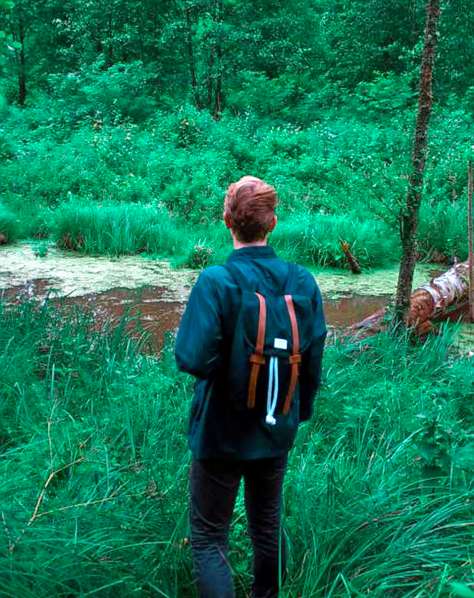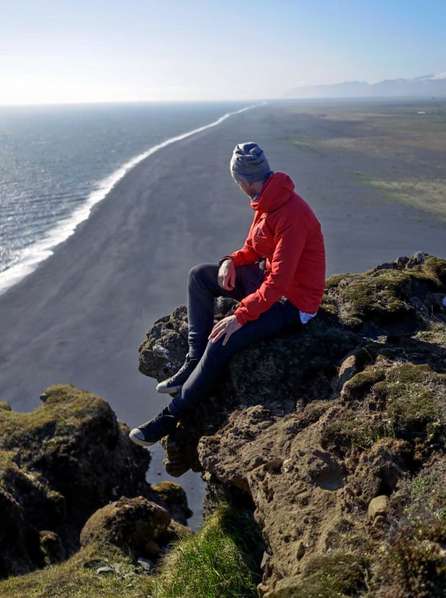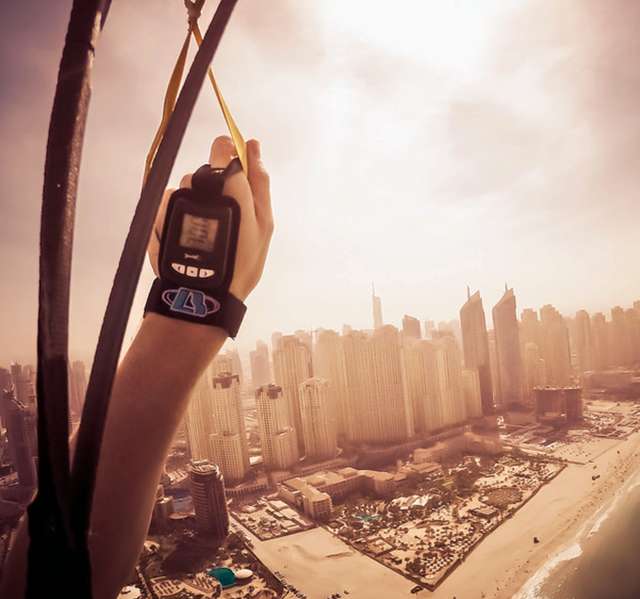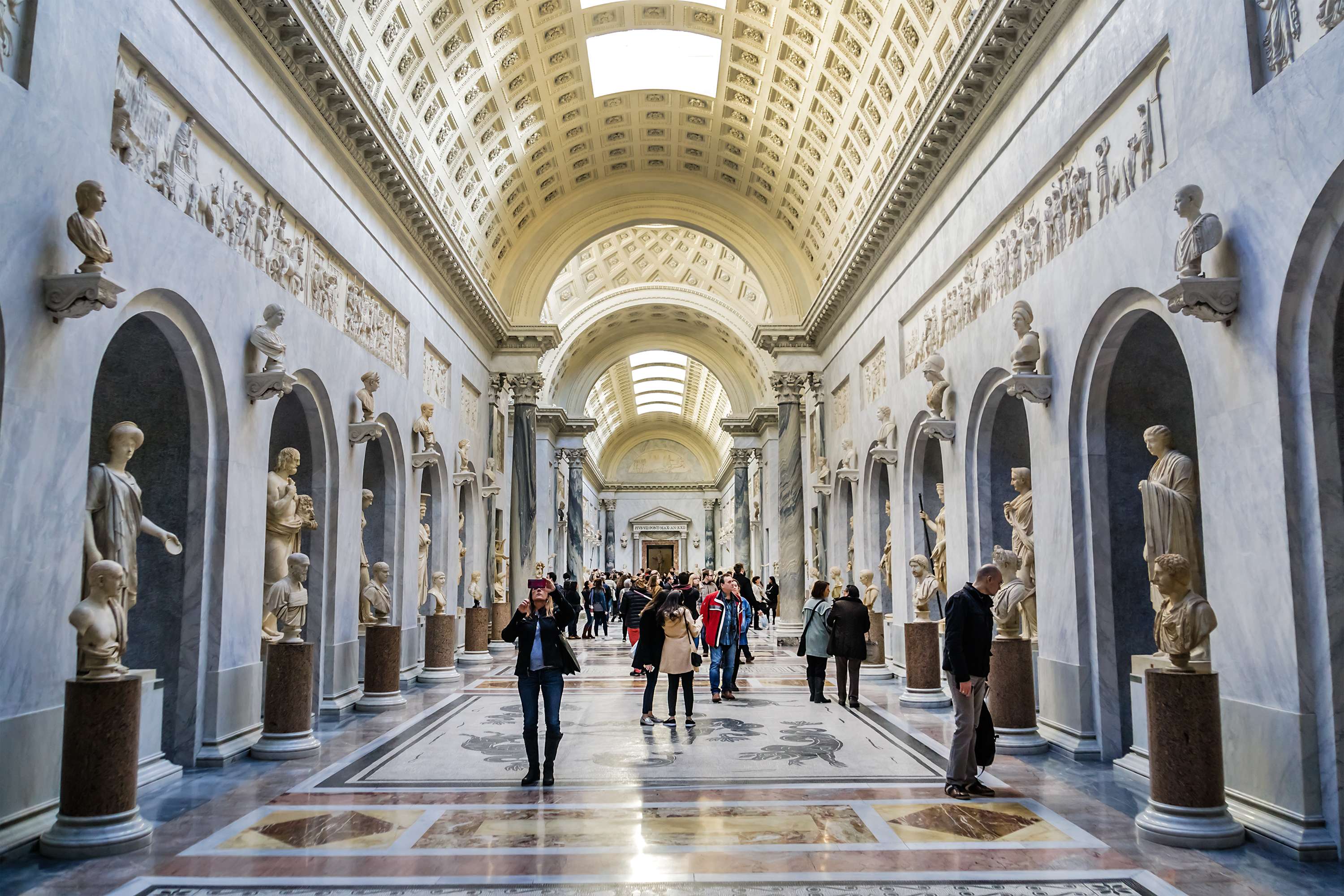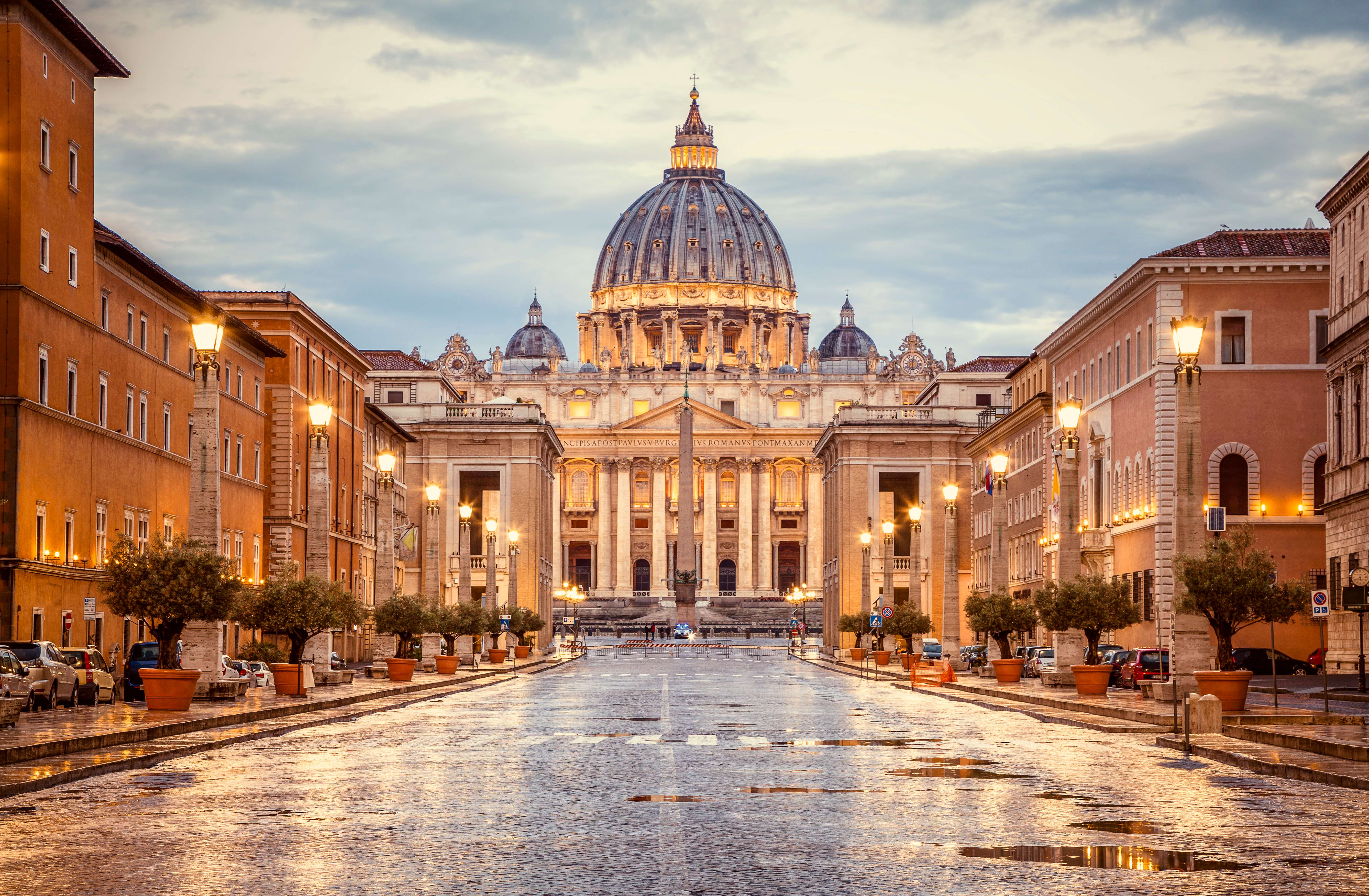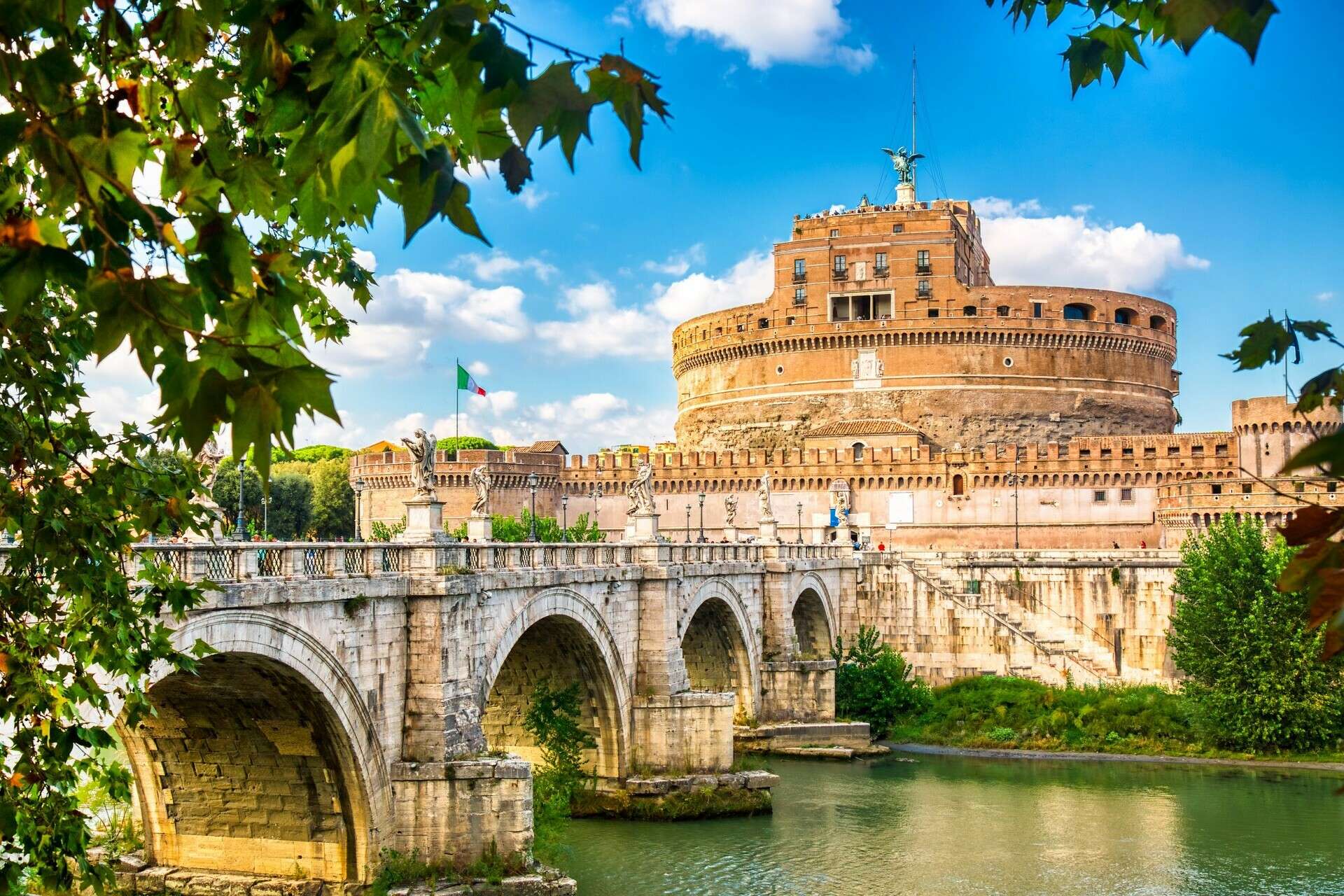Rome Walking Tours
If you are planning to visit the capital city of Rome anytime soon, you are suggested to book a well-curated walking tour of Rome for the best sightseeing experience. Led by a certified local guide, a walking tour will take you on a fully guided exploration trip around the city, offering you a once-in-a-lifetime experience of discovering the iconic heritage landmarks as well as learning about their evolution and history. On your Rome walking tour, you can explore significant monuments like The Colosseum, the Vittorio Emanuele II Monument, and the Pantheon and toss a coin into the iconic Trevi Fountain. You can also watch some brilliant local talents performing at Piazza Navona, click some great couple pictures at the postcard-perfect Spanish Steps, and take a walk through history at Imperial Forums & Trajan’s Market. Select the best walking tour in Rome online and book your tour in advance at the most budget-friendly prices.
Rome Walking Packages | Duration | Price |
|---|---|---|
| Vatican Museums & Sistine Chapel Tickets | Skip The Line | 2 hours | INR 75 |
| Basilica Dome to Underground Grottoes Tour, Rome | 1 hour | INR 50 |
| Castel Sant Angelo Tour in Rome | 2 hours | INR 17.5 |
Rome Walking Packages
Best Walking Destinations
Our Partners
Newly Added Experiences
Tourism Board Alliances
Rome Walking FAQs
Which sightseeing places can we cover during a walking tour in Rome?
1. The Colosseum: Nestled at the heart of the city, the world-famous oval-shaped amphitheater, The Colosseum is one of the prime attractions of the walking tour Rome. Commissioned by the Roman Emperor Vespasian of the Flavian Dynasty, this magnificent monument was constructed more than 2000 years ago as a gift to the Roman public from the emperor. Nicknamed as the Flavian Amphitheater, the strategically built Colosseum is often referred to as one of the Seven Wonders of the World. This place is guided by high security and not more than 3,000 people can enter the Colosseum at one time.
2. Imperial Forums & Trajan’s Market: Located in Trajan’s Market, the Imperial Forums is basically an archaeological museum with the Templum Pacis and the forums of Augustus, Nerva, and Julius Caesar, all of which were built between the 46 B.C. and 113 A.D.. Some of the prime highlights to see here on your walking tour Rome include the Sculpted head of Emperor Constantine, dating back to the early 4th century AD and placed in Trajan’s Forum, Statue of a standing man with body armor, dating back to 112 AD and placed in Trajan’s Forum, and a female statue of Victory, dating back to 2 BC and placed in Augustus’s Forum.
3. The Pantheon: Constructed back in 125 AD and dedicated to the Roman gods and goddesses, the Pantheon is one of the most well-preserved Roman buildings that can be explored on the walking tour of Rome. The Pantheon has an enormous circular portico featuring three ranks of magnificent granite-made colossal Corinthian columns. This portico is connected to a rotunda covered with a dome. Made of concrete, this dome has a central opening, called the Oculus. During the monsoons, it rains through the Oculus, making for a mesmerizing sight to soak in. At present, the Pantheon is home to the remains of many eminent personalities of Rome including the legendary artist Raphael and the late Italian Kings Vittorio Emanuele II and Umberto I.
4. II Vittoriano—Monument to Vittorio Emanuele II: The splendid neo-classical Vittorio Emanuele II Monument is one of the most beautiful heritage buildings to admire on the best walking tour in Rome. Spread across a vast area of a whopping 17,000 square meters and constructed between the years 1885 and 1935 by the Italian Parliament, this enormous monument is dedicated to King Vittorio Emanuele II, who happens to be the first king of Italy. A 12 meters high bronze equestrian statue of King Victor Emmanuel II, made by the sculptor Enrico Chiaradia is stationed at the center of the memorial complex. The topmost terrace of the monument offers breathtaking 360-degree panoramic views of Rome.
5. Trevi Fountain: One of the most fascinating attractions to see on your Rome walking tour, the mesmerizing Trevi Fountain dates back to the 17th century and flaunts a beautiful Baroque style architectural design. This fountain was constructed by Nicolò Salvi, more precisely between 1732 and 1751, for Pope Clement XII. It is supplied by an aqueduct, which was crafted by the legendary artist Agrippa. The Trevi Fountain features the sea god Oceanus along with tritons, shells, and horses. According to popular beliefs, tossing a coin into the water of the fountain using your right hand and with your back facing the fountain brings good luck.
6. The Capitoline Hill
Better known as the Capitolium, the Capitoline Hill was once dedicated to the god Saturn and is the site of the early Roman settlement. One of the most historically significant monuments to see on your walking tour of Rome, this hill was transformed into a stunning piazza by the legendary Italian sculptor, architect, and painter, Michelangelo. While you are at the Capitoline Hill, you can see a number of other impressive architectural marvels, including The Palace Of Senators, Palazzo Dei Conservatori and Palazzo Nuovo, The Statue Of The Emperor Marcus Aurelius, and the Monument To Victor Emmanuel II.
7. The Theatre of Marcellus: Constructed back in 13 BC and flanting a marvelous Doric order architectural design, the Theatre of Marcellus happens to be an age-old open-air theater, where locals and tourists enjoyed drama and musical performances in the times gone by. The impressive architectural design of this monument is known to have influenced the design of a number of important buildings like that of the Colosseum. Commissioned by Julius Caesar and completed under Augustus, this huge theater had the capacity to accommodate around 20,000 spectators. While you are at the Theatre of Marcellus during your walking tour of Rome, you can spend time admiring the Doric and Corinthian columns and soaking in the natural setting of the monument.
8. Spanish Steps: One of the most-photographed architectural wonders to explore on your Rome walking tour, the beautiful Spanish Steps cascade down from the church of Trinità dei Monti and reach Piazza di Spagna. There are a total of 135 baroque style steps that make for an amazing place to sit and relax, watching the daily local life taking its course. These steps are adorned with colorful flowers and at the foot of the set of stairs, you can find a breathtaking boat-shaped fountain, which was crafted by Gian Lorenzo Bernini back in 1627. You can also spot a number of local artists and street performers, showcasing their talents here.
9. Piazza Navona: No matter the type of traveler you are, you will love to spend some time at the Baroque style architectural masterpiece, Piazza Navona on your Rome walking tour. Once known as Circus Agonalis, this flamboyant square flaunts an awe-inspiring festive atmosphere. It is packed with a plethora of shops, upmarket restaurants, cute cafes, a baroque-style church, and three beautiful fountains namely Fontana dei Quattro Fiumi, Fontana del Moro, and Fontana dei Calderari. You can also find a myriad of talented street performers like singers, gymnasts, dancers, and magicians here, showcasing their talent.
10. Castel Sant’Angelo: Having served as a mausoleum, a fortress, a museum, and a hideaway at different times in history, Castel Sant’Angelo is one of the most sought-after monuments to see on the best walking tour in Rome. Accessible by a spiral ramp, this magnificent five-storeyed monument is home to the ashes of some great emperors of the Roman empire and the weapons used by them during the wars. You can also see the prisons that held the enemies of the empire in the bygone times. The building also exhibits an extensive collection of impressive paintings by some of the most iconic artists of all times.
What is the best time for a walking tour in Rome?
The best time for taking the walking tour of Rome is during the summer season, between the months of June and September, when the weather is warm and the sky is clear. This is the perfect time to walk around the city and explore its iconic landmarks.
How to reach Rome?
1. By Air: Rome has two international airports namely Leonardo da Vinci in Fiumicino and Ciampino, which connect it to the major cities across the world.
2. By Rail: The main railway station of Rome is Roma Termini, which connects it to all the major cities in Italy and Europe.
Which places are family-friendly in Rome?
Almost all the places in Rome are family-friendly. Some of the best places you can visit on your Rome walking tour with your family include the Pantheon, Piazza Navona, Trevi fountain, Explora Children's Museum, Castel Sant’Angelo, Piazza Navona, Vittorio Emanuele II Monument, the Colosseum, and the Theatre of Marcellus.
Is Rome worth visiting?
Rome is totally worth visiting, thanks to its impressive architectural marvels, rich well-preserved history, trendy fashion shops, picturesque fountains, ancient temples, and delicious cuisine.
What are the famous activities to do in Italy that you can book via Thrillophilia?
Rome Walking Reviews

